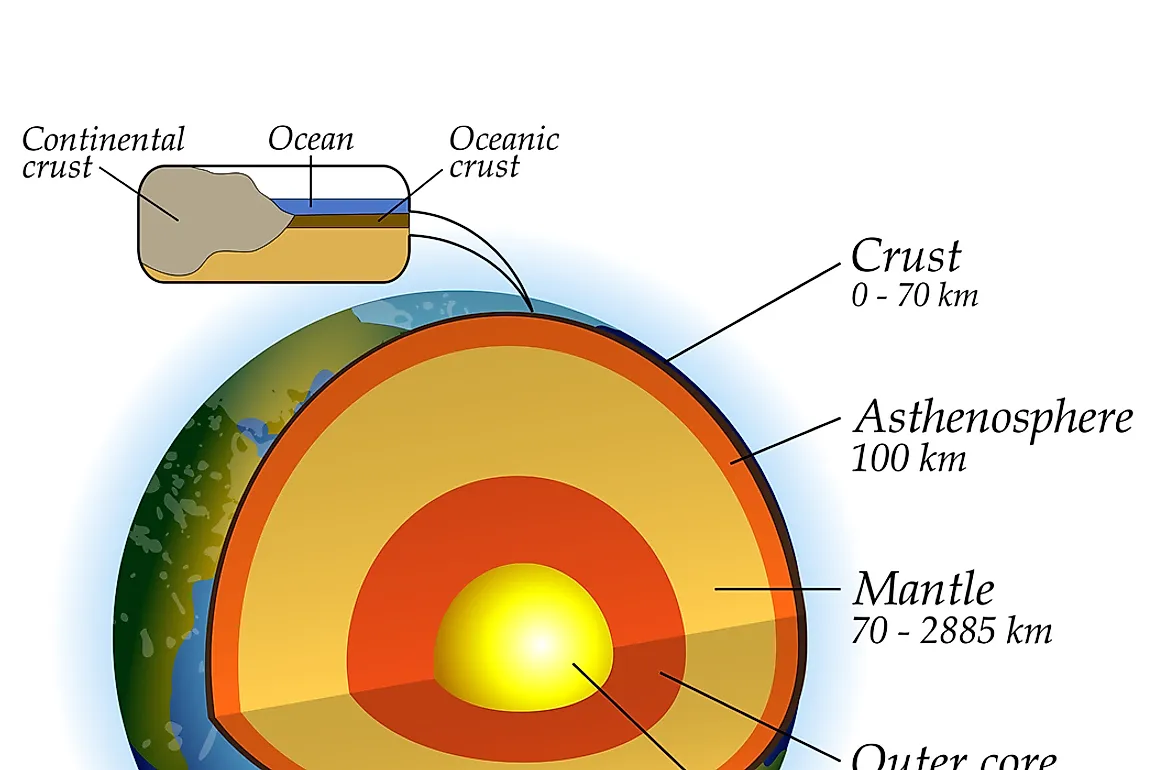Are There Differences Between Continental Crust and Oceanic Crust?

There are different strata of the earth that are formed by different materials of different density and physical properties. Among the most crucial properties of these layers is their density. In simple terms, density can be defined as the heaviness of a substance. Less dense layers float on top of denser ones such as the mantle. The oceanic crust and the continental crust are good examples of less dense layers. Both float on top of the denser mantle. Together, these layers make up the uppermost part of the earth that is collectively known as the crust.
Oceanic Crust
The oceanic crust is the component of the earth’s crust that makes up the ocean basins. This part, which as a density of around 3.0 g/cm3, is made up of dark basalt rocks that contain minerals and substances silicon, magnesium, and oxygen. A unique occurrence of recycling happens to this layer. With time, solid mantle gathers on the underside of the oceanic crust thus forming two layers. The extra weight sinks the layer into the mantle which leads to periodic melting and recycling of the continental crust.
Continental Crust
The continental crust is that part of the crust that makes up the earth’s surface. In fact, about 40% of the surface of the earth is made up of this layer. The rocks in this layer are made up of light-colored granite rich in minerals and substances like aluminum, oxygen, and silicon. The continental crust has a density of about 2.6 g/cm3 which helps the continents of the world to stay in one place.
Difference Between Oceanic and Continental Crust
The first difference between the two layers comes in the composition of the rocks. The oceanic crust is mainly made out of dark basalt rocks that are rich in minerals and substances like silicon and magnesium. By contrast, the continental crust is made up of light-colored granite rocks full of substances like oxygen and silicon. The difference in composition between the mantle and the two layers of the crust is maintained by a process known as partial melting. Essentially, when a rock starts melting but doesn’t melt all the way, some minerals and substances are lost by the melting rock while others are retained. Consequently, the layer that is beneath the partially melted rock gains these new minerals and substances thus making that layer denser than the one above.
Another difference comes in the density of the two layers. From the descriptions, it is clear that the oceanic crust has a higher density than the more buoyant continental crust since the latter floats on top of the former. Getting into the technicalities, the continental crust has a density of around 3.0 g/cm3 compared to 2.6 g/cm3 of the continental crust. In addition, the continental crust is much thicker than the oceanic crust.
The continental crust is older than the oceanic crust. This fact can be easily explained by the recycling process of the oceanic crust. The recycling process does not happen to the continental layer. Consequently, this ensures that the oceanic layer is always younger geologically.











